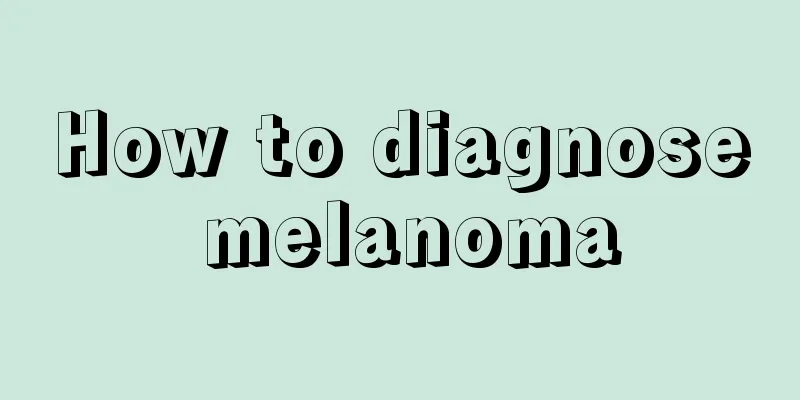What's the matter with enlarged kidneys

|
In modern society, many diseases have occurred due to people's bad eating and living habits. What people often call enlarged kidneys is a disease, the scientific name of which is enlarged renal cyst. Many patients suffering from this disease do not know what causes the disease or what the symptoms are. So, what is the cause of the enlarged kidneys? First, what is the reason for both kidneys being enlarged? It may be a congenital abnormality, with one or both kidneys having one or several round cystic cavities of varying sizes that are not connected to the outside world. Most of them are unilateral, so they are called simple renal cysts. The incidence rate may increase with age. 50% of people over 50 years old can be found in this cyst by B-ultrasound. It can be diagnosed with the help of B-ultrasound and CT. Adult renal cyst is a congenital hereditary disease. The renal parenchyma is filled with countless round cysts of varying sizes that are not connected to the outside world. The cysts contain fluid. The small ones are invisible to the naked eye, and the large ones can be several centimeters, so it is called polycystic kidney. Symptoms include increased nocturia, low back pain, high blood pressure, etc. Urinalysis may reveal hematuria and a small amount of proteinuria, which often slowly develops into chronic renal failure. 10% of people have kidney stones and 30% have polycystic liver disease. An experienced doctor can confirm the diagnosis with the help of B-ultrasound and intravenous pyelography. Second, acquired renal cysts mainly occur after uremia or dialysis treatment. It has nothing to do with age, but is related to the duration of hemodialysis. The kidneys originally do not have renal cysts. According to literature reports, most patients who have been on dialysis for more than 3 years will develop cysts. There are at least 4 cysts in one of its kidneys, most of which are 2 to 3 centimeters in diameter. Some cysts can become infected or even cancerous, and the diagnosis can be confirmed by B-ultrasound or CT examination. Acquired renal cystic disease: refers to the occurrence of renal cysts in patients with advanced renal disease. Treatment is mainly symptomatic. For severe and recurrent hematuria, renal artery embolization may be considered. Medullary cystic disease: It is relatively rare and difficult to diagnose. It often presents in childhood or adolescence with symptoms such as polydipsia, polyuria, and enuresis, and may lead to renal failure. There is no specific treatment for this condition, the main focus is on protecting kidney function. What causes enlarged kidneys? The cause of renal cysts has not been found yet, and the growth rate of the cysts is different. Since they have no symptoms, they were difficult to detect in the past. Generally speaking, renal cysts do not cause any sensation, discomfort, hematuria or urinary tract infection. Because the cyst and urinary tract are blocked. If there is infection or bleeding in the cyst, there will be symptoms such as fever, swelling and pain in the kidney area. Doctors generally use 4-5 cm as the dividing line. Cysts smaller than this number do not require treatment and can be observed regularly. Cysts larger than 4-5 cm can compress the kidneys, affect renal function and cause hydronephrosis. The cyst wall may also become cancerous and require treatment. Simple renal cysts are the most common pathological abnormalities of the kidney. Since the widespread use of B-ultrasound, the detection rate of renal cysts has increased significantly. Simple renal cysts with a diameter of less than 4 cm generally have no special symptoms and are only treated by clinical observation. Simple renal cysts with a diameter of more than 5 cm may cause discomfort symptoms such as low back pain due to their increased size. The local compression effect of the cyst on the renal parenchyma causes progressive damage to the kidney function. If the cyst continues to increase, it also has a certain tendency to become malignant and requires clinical treatment. |
<<: What's the matter with the big pimple on my head
>>: What are some tips for fixing an ugly mouth shape
Recommend
How to do abdominal breathing correctly
The health of breathing is directly related to wh...
The efficiency of total laryngectomy in treating laryngeal cancer has been much higher
The efficiency of total laryngectomy in treating ...
Which basin is best for soaking feet?
Many middle-aged and elderly people have the habi...
Apical periodontitis still hurts after multiple local anti-inflammatory treatments
The health of teeth is very important to people&#...
How can recurrence of brain cancer be cured
How can recurrent brain cancer be cured? The trea...
What medicine should I take for poor memory
Memory is a basic ability for people to survive. ...
What should I do if my baby has hemangioma on his tongue? Treatment of baby's tongue hemangioma
Hemangioma is very common in babies. The most com...
What are the methods to eliminate internal heat? You can do this
In daily life, getting angry is a common disease....
How to relieve calf pain after exercise?
Leg health has a great impact on people's abi...
Taboos of river crabs
River crabs are a cold food and are not suitable ...
Is Schistosoma japonicum cirrhosis serious?
Although cirrhosis of the liver can be said to be...
Is the recurrence rate of kidney cancer high? It is related to metastasis
Kidney cancer is not highly malignant and has no ...
Are there any side effects of drinking protein powder?
Protein powder is a nutritious health food. Eatin...
About the overview of melanoma
Melanoma, also known as malignant melanoma, is a ...
Some reasons for sweaty palms
Sweating palms is what we call hyperhidrosis in d...









